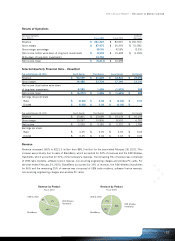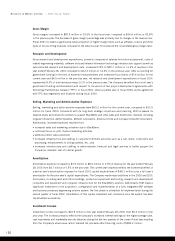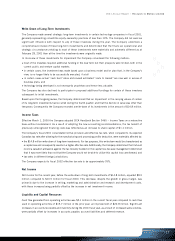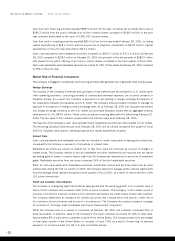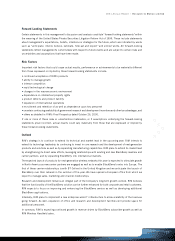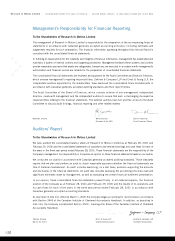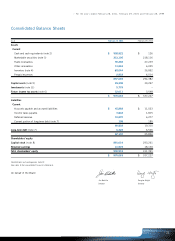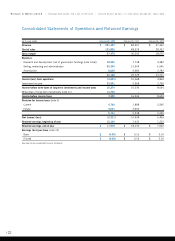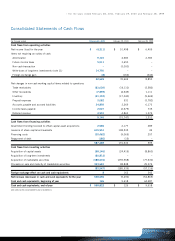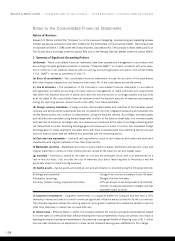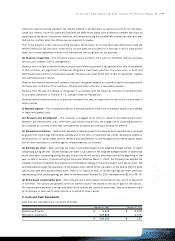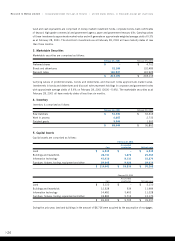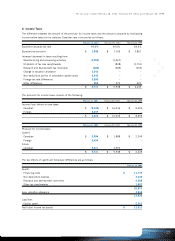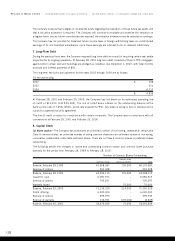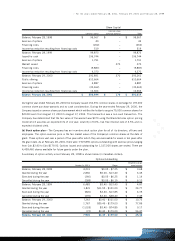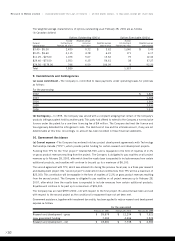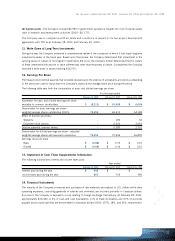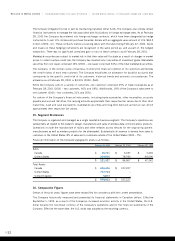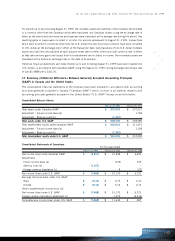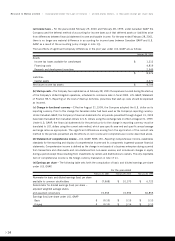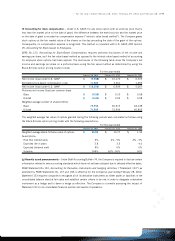Blackberry 2001 Annual Report Download - page 27
Download and view the complete annual report
Please find page 27 of the 2001 Blackberry annual report below. You can navigate through the pages in the report by either clicking on the pages listed below, or by using the keyword search tool below to find specific information within the annual report.
>For the years ended February 28, 2001, February 29, 2000 and February 28, 1999
>
>25
Under this new accounting standard, the liability method of tax allocation is used to account for income taxes.
Under this method, future tax assets and liabilities are determined based upon differences between the financial
reporting and tax bases of assets and liabilities, and measured using the substantially enacted tax rates and laws
that will be in effect when the differences are expected to reverse.
Prior to the adoption of the new accounting standard, the provision for income taxes was determined using the
deferral method of tax allocation under which income taxes are provided for in the year in which transactions
affect net income regardless of when such transactions are recognized for tax purposes.
(k) Revenue recognition –The Company earns revenue primarily from sales of handheld devices, wireless
services and software licence arrangements.
Revenue from the sale of handheld device products and other equipment is recognized when title is transferred
to the customer, all significant contractual obligations have been satisfied, the sales price is fixed and
determinable and collection is reasonably assured. Provisions are made at the time of sale for warranties, royalties
and estimated product returns.
Revenue from wireless services and software licences is recognized rateably on a monthly basis in accordance with
the terms and conditions of the customer contracts and when collection is reasonably assured.
Revenue from the sale of software is recognized in accordance with the American Institute of Certified Public
Accountants Statement of Position 97-2, Software Revenue Recognition.
Deferred revenue relates primarily to amounts received from service subscribers for services to be provided in
future periods.
(l) Warranty expense –The Company provides for a warranty expense at the time of shipment based on an estimate
of these anticipated costs.
(m) Research and development –The Company is engaged at all times in research and development work.
Research and development costs, other than capital asset acquisitions, are charged as an operating expense of
the Company as incurred unless they meet generally accepted accounting principles for deferral.
(n) Government assistance –Government assistance towards research and development expenditures is received
as grants from Technology Partnerships Canada and in the form of investment tax credits. Assistance related to
the acquisition of capital assets used for research and development is credited against the related capital assets
and all other assistance is credited against related expenses, as incurred.
(o) Earnings per share –
Basic earnings per share is calculated based on the weighted average number of shares
outstanding during the year. Diluted earnings per share is calculated on the weighted average number of shares that
would have been outstanding during the year had all the dilutive options been exercised at the beginning of the
year, or date of issuance, if issued during the fiscal year. Effective March 1, 2000, the Company has adopted the
Canadian Institute of Chartered Accountants recommendations relating to the accounting for earnings per share. The
recommendations require the application of the treasury stock method for the calculation of the dilutive effect of stock
options and have been applied retroactively. There is no impact on basic or diluted earnings per share previously
reported except that diluted earnings per share for the year ended February 29, 2000 decreased from $0.15 to $0.14.
(p) Stock-based compensation plan –The Company has a stock-based compensation plan, which is described
in note 8(b). The options are granted at the fair market value of the shares on the day of grant of the options.
No compensation expense is recognized when stock options are issued to employees. Any consideration paid
by employees on exercise of stock options is credited to share capital.
2. Cash and Cash Equivalents
Cash and cash equivalents are comprised as follows:
February 28, 2001 February 29, 2000
Balances with banks $ 6,002 $ (2,252)
Short-term investments 502,820 2,378
$ 508,822 $ 126


